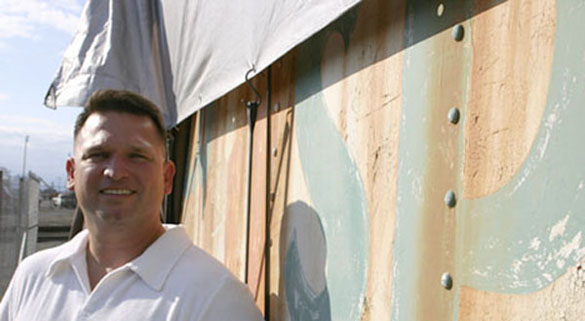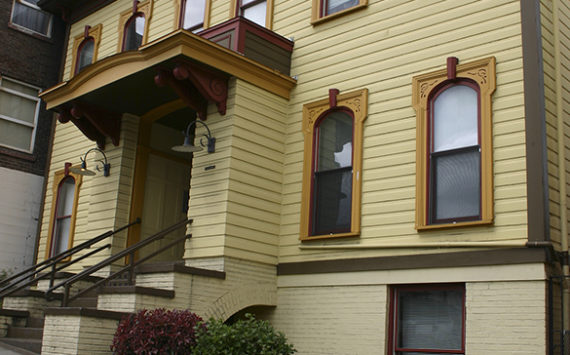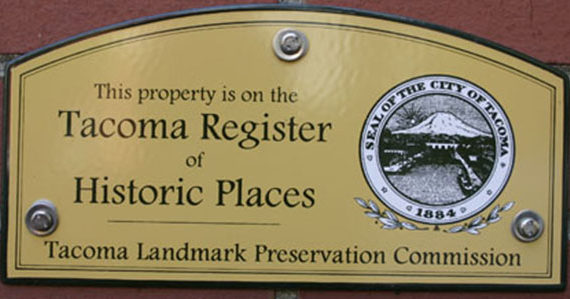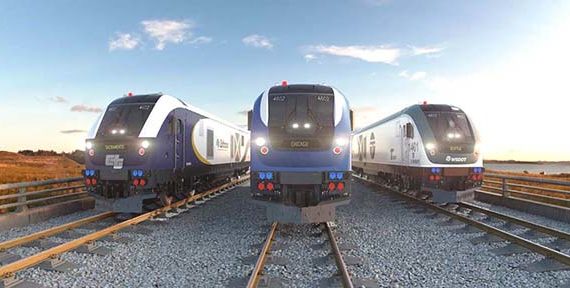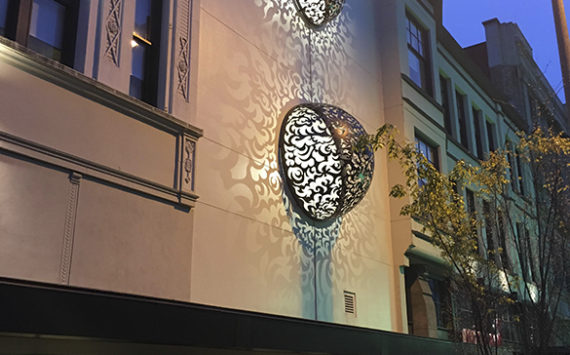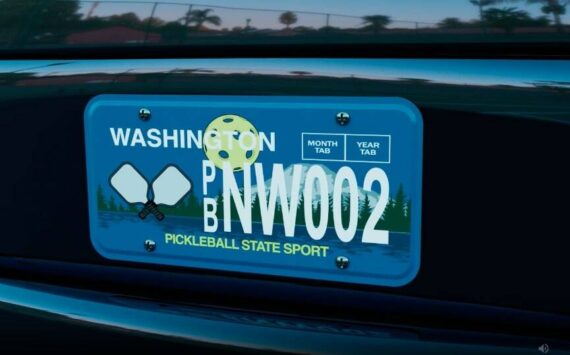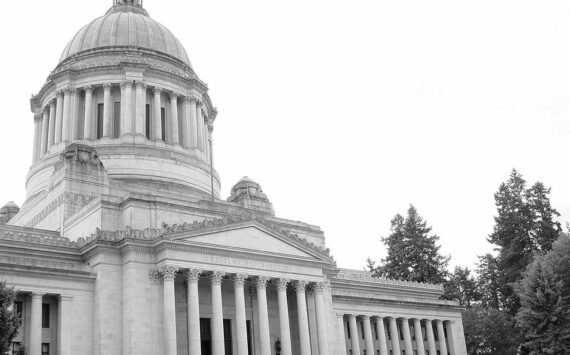When will Tacoma’s old dining car find a permanent home?
That question has been on Dave Burns’s mind for awhile.
It arose 20 years ago when Burns — driving from Ellensburg to Tacoma during a break in classes at Central Washington University — passed through the small town of Easton and first glimpsed the red, L-shaped, Art Deco sign advertising the ‘Sportsman Diner,’ and its abandoned roadside dining car.
It’s a question Burns asked last month, when he learned an effort to save a 117-year-old South Tacoma home and adjacent property — both donated by the owner, Ken Miller, in hopes of turning them into a museum and site for the dining car — had turned a corner. The home, known as Hansen House, and located at 5820 South Hood Street, sits in the path of Sound Transit’s plan for a new Sounder Station; it was acquired by the transit agency under eminent domain.
On Aug. 6, Miller and Burns received a letter from Sound Transit chief executive officer Joni Earl regarding Hansen House, which isn’t listed on any historic registers, but once belonged to a turn-of-the-century railroad worker and his family. Earl was asked by Pierce County Executive John W. Ladenburg and members of Tacoma City Council if the house could be saved.
Sound Transit’s solution?
If Burns and Miller can find a site on which to relocate the house, Sound Transit will pay up to $15,000 toward the relocation costs. But the house has to be moved by Oct. 12, in time for a contractor to begin site clean-up.
On Aug. 20, Sen. Rosa Franklin and Sen. Mike Carrell wrote a letter to Earl, urging her to give Burns and Miller more time to find a home.
“The Hansen House is a historic piece of architecture that provides significant insight into a very important part of Tacoma’s history, namely the daily lives of early-1900s railroad workers and their families,” wrote Senators Franklin and Carrell. “We are hopeful that Sound Transit will consider delaying its decision to demolish the house so that we may continue to work on securing property for relocation of the house.”
For Burns, who remains upbeat about — if not exhausted by — his project to save the 1910 Norther Pacific dining car, it’s another funding obstacle in the way of raising several-hundred thousand dollars (or more) to restore the old car.
An amateur history buff, Burns was originally struck by Easton’s charm and connection to timber and rail histories, and made a point of stopping in to snap photos of the town. That’s when he first saw the dining car, which had been renamed as Sportsman Diner.
Over the years, Burns thought of ways to acquire the car and move it to Tacoma, where he would renovate it into a cafe and museum. The diner had shut down in the early-1980s, but the owner wouldn’t sell the old car.
Last year, however, the tide turned. The owner’s daughter, who had originally planned to renovate the old car and keep it in Easton, passed away.
The owner transferred ownership of the car to Burns. In October 2006, Burns, who works for Tacoma Power and leads Tacoma Railcar Preservation Society, arranged to transport the car over the Cascade Mountains.
Today, the car sits on the Tacoma tide flats, on a triangular parcel of land donated by Tacoma Rail. “When we have events, I invite Dave to speak with elected and civic leaders about his project, and try to make sure the project gets talked about,” says Tacoma Rail chief executive officer Paula Henry.
The Tacoma Daily Index met Burns at his dining car recently to discuss his project.
TACOMA DAILY INDEX: What is your goal for the dining car?
DAVE BURNS: The goal for me is just to have it restored. I’ve always had a passion for Tacoma history. I’ve always collected things related to Tacoma. I’ve always been into historic preservation of old buildings. It used to kill me because I work in construction, and I would see some of these old buildings being demolished. If I could just get my hands on some of this and bring it back to life. I just couldn’t afford it. I want to bring [the dining car] back and have it be a landmark. The dining car would be one of those things that everyone would talk about and know. And there are so many people with ties to the railroad here. This town was basically built off the railroads. There’s nothing for the public to really access. Union Station is a courthouse. You can’t just walk through and really enjoy and look at it. And the Northern Pacific headquarters is a fine piece of architectural work. But you can’t just go through there either. You have law offices and whatnot. I thought, ‘Gosh, if I could get that car and bring it back to Tacoma, how cool would that be to promote?’ [Ideally, I would like to] restore it, and have a nice relaxing place to have coffee, tea, and maybe a sandwich or something. This would be a nice way to promote some of the early history and have a little business that could help support itself. That’s the whole goal — use the car to promote Tacoma’s early railroad history.
INDEX: How much history have you gathered about the dining car?
BURNS: In a nutshell, it’s a 1910 Northern Pacific car. Northern Pacific had its headquarters here in Tacoma. [At one point,] they were converting from all the stations where they had the restaurants, and going with food on the rail. They ordered 15 dining cars from Barney & Smith Car Company in 1909. This one was in service from 1910 all the way up until 1949, and operated on the North Coast Limited run. This car would run from Seattle all the way to Chicago. Then, at some point, it would alternate, and take the Yellowstone route, which would take you to Yellowstone National Park. All the records we found, everything shows it being on the North Coast Limited Seattle-to-Chicago route, and the service or repairs would be done in a South Tacoma shop.
INDEX: You discovered the car in Easton, Wash. How did it end up in that small town?
BURNS: In 1949, the car was retired from service and sent to a shop in South Tacoma, where it was scheduled for demolition. One of the shop’s master carpenters talked to a buddy of his, and they decided, ‘Hey, this would be perfect over in Easton.’ The owner bought the car from Northern Pacific, had it shipped over, and then spent the next year converting it. He put it on a concrete foundation, and used it as a diner. The owner’s daughter told me it was basically open 24 hours per day. There were three shifts of three people. There was a cook and two waitresses, and they would work three 8-hour shifts. At that time, there was no Interstate 90. It was just State Route 10, which ran right in front of the dining car. All the people who used to travel that route, they stopped at the dining car. Someone told me the joke was there was no key to the car because it was never closed. In all those years, she doesn’t remember it being closed. That was the joke. Nobody knew where the keys were to lock it up.
INDEX: When did you first learn about the dining car?
BURNS: I was going to school at Central Washington University, and I would come through Easton because I always liked its ‘Mayberry,’ artsy look. I would take my camera and snap pictures of the old gas station. And there was the dining car. I thought, ‘How cool is that? A dining car. You don’t see that anymore.’ I had been back in Pennsylvania and the East Coast, where I saw diners and thought, ‘Wouldn’t that be cool in Tacoma?’ I contacted the owner a few times over the years to see if he wanted to sell it. One time, I asked if I could look inside. He said, ‘No, no. It’s not a museum. It’s closed.’ He wasn’t selling anything. [At one point, though, he] said he would entertain the offer. His daughter was going to restore it, paint the outside, and use it as a little gift shop. But she died of cancer. He just wanted it out of there.
INDEX: What are some of the cost estimates you’ve heard regarding restoration of the dining car?
BURNS: It would be about $450,000 to just restore the interior, fix the roof, and have it on static display. A restoration specialist went through every nook and cranny and put hard numbers to everything. His idea was to have it displayed somewhere near tracks, where you could actually move it. [One idea was to] restore it completely and use it with Train to the Mountain for special occasions. You don’t want to put a lot of money into having a museum-quality piece, and then beat it up by running it on the tracks. But [with Train to the Mountain], speeds are not high. You have a fairly level grade. It’s a straight shot at lower speeds. You’re not looking at doing a lot of damage to the car. That would help also support the car. People would get more attached to the car, and it could play a bigger role. Doing that, you are looking at about $650,000 to $675,000. [Another consultant recommended] I have the car in a covered facility. If you have track nearby, lay track out to where you have the car covered in the winter months, and in the summer months you can roll it right out. He said I was probably looking at $1.2 million for a complete package.
More information about Dave Burns and his dining car project is online here.


Todd Matthews is editor of the Tacoma Daily Index and recipient of an award for Outstanding Achievement in Media from the Washington State Department of Archaeology and Historic Preservation for his work covering historic preservation in Tacoma and Pierce County. He has earned four awards from the Society of Professional Journalists, including third-place honors for his feature article about the University of Washington’s Innocence Project; first-place honors for his feature article about Seattle’s bike messengers; third-place honors for his feature interview with Prison Legal News founder Paul Wright; and second-place honors for his feature article about whistle-blowers in Washington State. His work has also appeared in All About Jazz, City Arts Tacoma, Earshot Jazz, Homeland Security Today, Jazz Steps, Journal of the San Juans, Lynnwood-Mountlake Terrace Enterprise, Prison Legal News, Rain Taxi, Real Change, Seattle Business Monthly, Seattle magazine, Tablet, Washington CEO, Washington Law & Politics, and Washington Free Press. He is a graduate of the University of Washington and holds a bachelor’s degree in communications. His journalism is collected online at wahmee.com.
